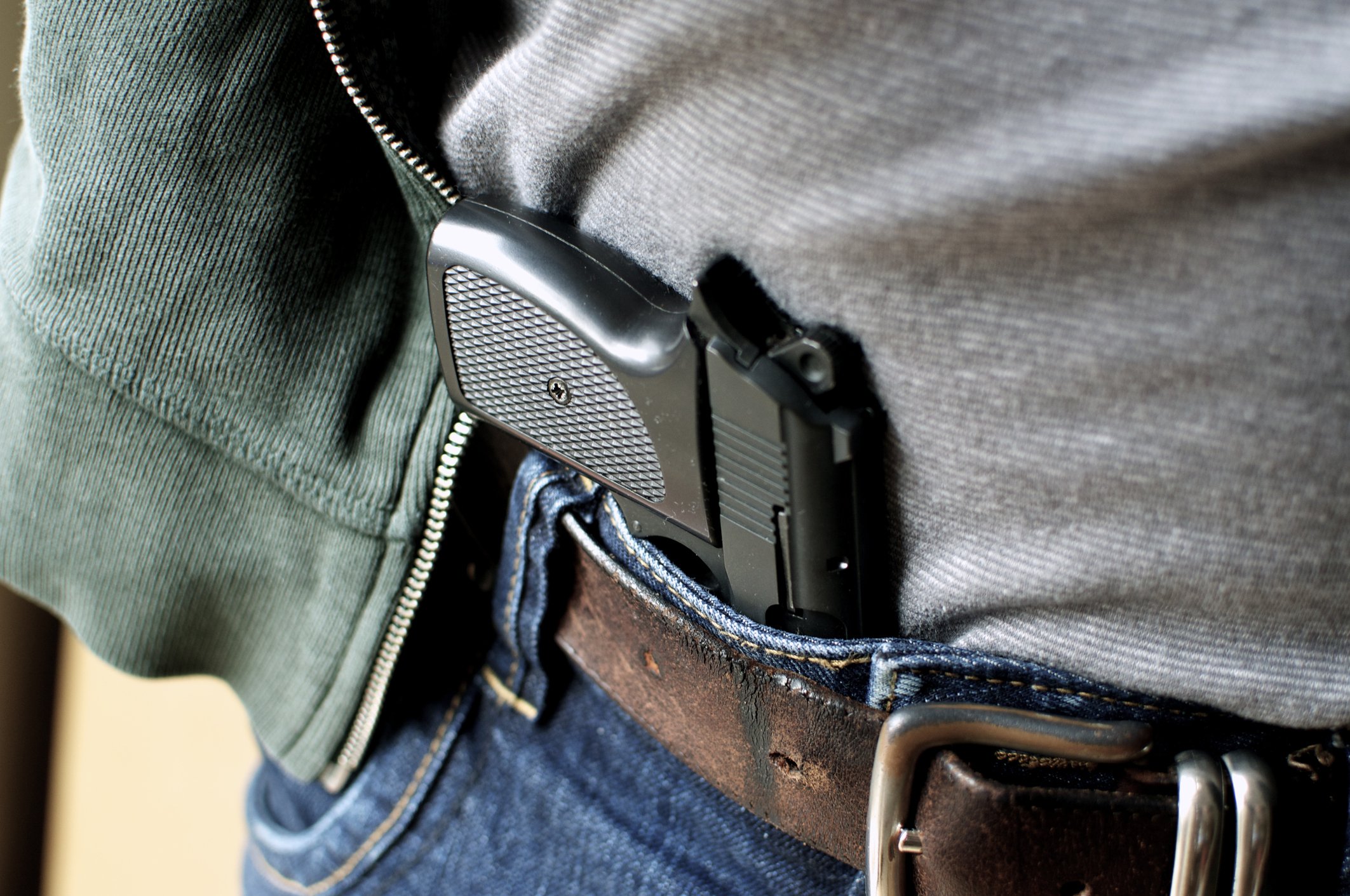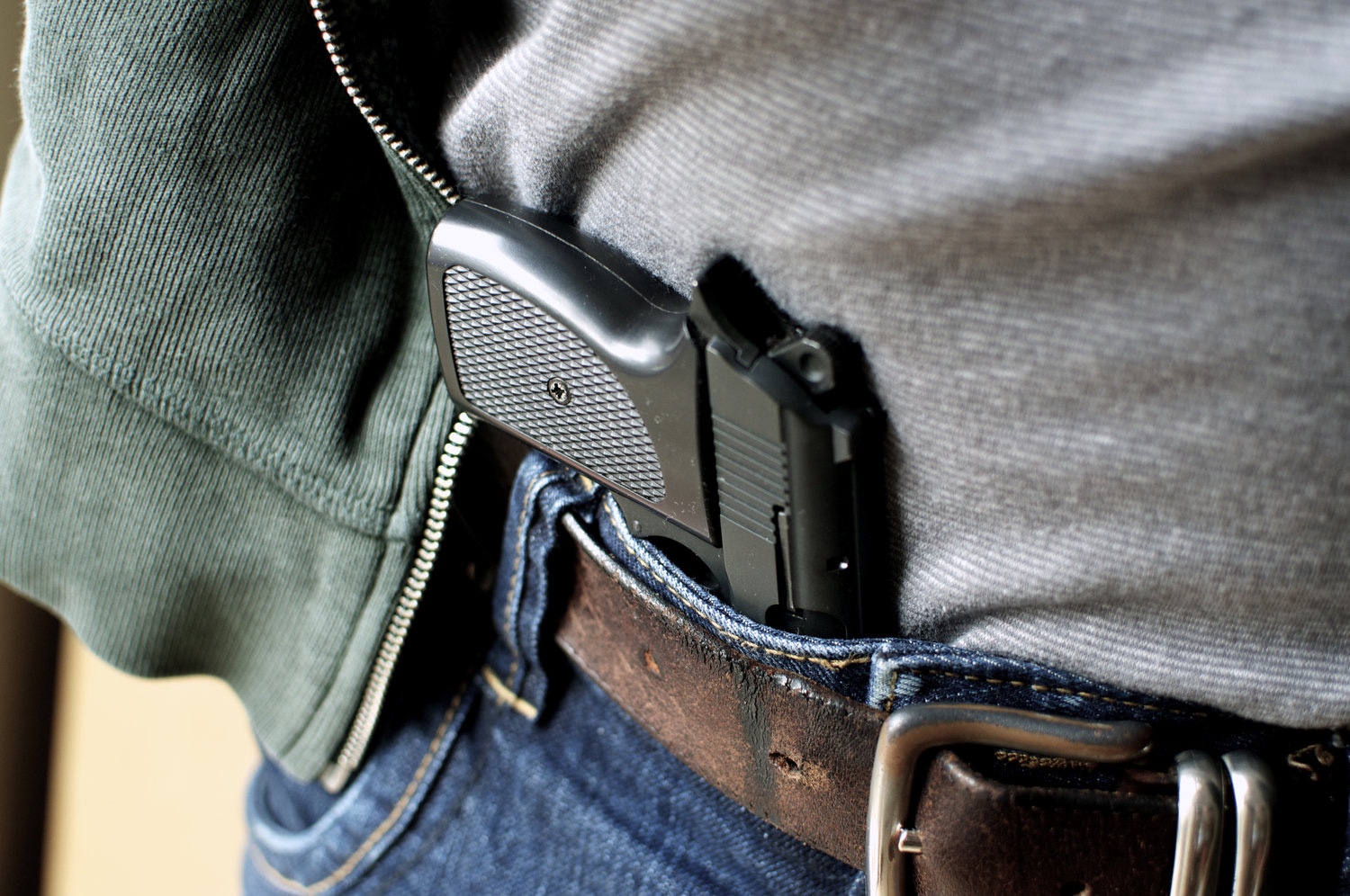
Philadelphia Criminal Defense Blog
PA Supreme Court Agrees: Odor of Marijuana Does Not Provide Probable Cause to Search Vehicle
Criminal Defense Lawyer Zak T. Goldstein, Esquire
The Pennsylvania Supreme Court has decided the case of Commonwealth v. Barr, holding that the odor of marijuana alone no longer provides the probable cause necessary for the police to search a motor vehicle. Instead, the police may consider the odor of marijuana as a factor in terms of whether they have probable cause, but they may not search a car solely because it smells like marijuana. The Superior Court had previously reached a similar conclusion, and the Supreme Court has now upheld that decision.
The Facts of Barr
In Barr, a Pennsylvania State Police Trooper was training a newly-hired Trooper. The troopers were on routine patrol in Allentown, PA when they saw a vehicle make a U-turn. The U-turn was not illegal, but the troopers decided to follow the vehicle. The vehicle appeared to be speeding and it was past midnight, so the troopers continued to follow it. Eventually, the vehicle failed to properly stop at a stop sign, so the troopers pulled it over. The troopers approached the vehicle, and as they arrived at the window, they smelled the odor of marijuana. The defendant’s wife was the driver of the vehicle, the defendant was in the front passenger seat, and a third gentleman was in the rear passenger seat. He appeared to be drifting in and out of sleep.
After smelling the odor of burnt marijuana, the troopers directed the driver to get out of the car. The defendant began to argue with the troopers and insist that “no one is getting out of this fucking vehicle.” Backup officers from the Allentown Police Department arrived, and the defendant became more cooperative. The trooper then informed the occupants of the vehicle that he was going to search the vehicle due to the odor of marijuana. The driver and the defendant both provided proof that they had medical marijuana prescriptions to the troopers before the troopers conducted the search. By that time, Pennsylvania had in fact legalized medical marijuana.
The troopers believed that medical marijuana could only be consumed through a vape pen which would not produce an odor, and so they searched the car anyway. In the car, they found marijuana and a gun. They arrested the defendant and charged him with possession as well as violations of the uniform firearms act.
The defendant moved to suppress the evidence. At the suppression hearing, he presented an expert witness who testified that medical marijuana smells the same as illegal marijuana and that green, leafy marijuana can be consumed legally by using a vaping pen. The pen would also produce an odor of marijuana. Accordingly, it would not be possible to tell from the odor alone whether the marijuana was legal or illegal. Because marijuana is now potentially legal in Pennsylvania and because the troopers had no other reason for searching the car, the trial court granted the motion to suppress. The court found that the troopers did not have probable cause for the search.
The Superior Court Appeal
The Commonwealth appealed to the Superior Court. The Superior Court agreed that the odor of marijuana alone does not always justify as search, but it found that the trial court should have considered it as a factor in terms of whether or not the search was supported by probable cause. The odor must be considered along with all of the other factual circumstances surrounding the search in order to determine whether the police had probable cause. Therefore, the Superior Court remanded the case with instructions for the trial court to reconsider its ruling and consider all of the factors. The defendant then appealed to the Pennsylvania Supreme Court, and the Court accepted the case.
The Supreme Court’s Ruling
The Pennsylvania Supreme Court reinstated the trial court’s ruling. It found that the police did not have probable cause to search the car based on the odor of marijuana alone. The enactment of the medical marijuana act in Pennsylvania made it so that many people may legally possess marijuana, and there is often no way to tell whether someone possesses marijuana legally or illegally. As marijuana is no longer per se illegal in Pennsylvania, its odor no longer provides probable cause for a search of a vehicle pursuant to the “plain smell” doctrine. Like the Superior Court, the Supreme Court concluded that the odor of marijuana could be a factor in determining whether or not police have probable cause, but the odor alone is not enough. The Supreme Court also agreed with the trial court that the evidence should have been suppressed, so it reversed the Superior Court’s ruling to the extent that the Superior Court had directed the trial court to reconsider in light of its opinion. Accordingly, the evidence will be suppressed, and the Commonwealth will be unable to proceed with the case. It is now established law in Pennsylvania that the odor of marijuana alone does not provide the police with the probable cause necessary for a search.
Facing criminal charges? We can help.
Goldstein Mehta LLC Philadelphia Criminal Defense Lawyers
If you are facing criminal charges or under investigation by the police, we can help. We have successfully defended thousands of clients against criminal charges in courts throughout Pennsylvania and New Jersey. We have successfully obtained full acquittals in cases involving charges such as Conspiracy, Aggravated Assault, Rape, and Murder. Our award-winning Philadelphia criminal defense lawyers offer a free criminal defense strategy session to any potential client. Call 267-225-2545 to speak with an experienced and understanding defense attorney today.
PA Superior Court Approves Search of Man Who Overdosed in His Home Due to Bulge in Hoodie
Criminal Defense Lawyer Zak T. Goldstein, Esquire
The Pennsylvania Superior Court has decided the case of Commonwealth v. Davenport, holding on appeal that an officer lawfully performed a pat-down search of a defendant who had overdosed in his home after the officer noticed a bulge in his hoodie. This decision is concerning given the fact that the defendant was present in his home when the officers performed this search of him. Further, this decision seems to run afoul of Commonwealth v. Hicks which held that an officer cannot infer criminal activity merely because a defendant is in possession of a concealed firearm. Nonetheless, the Superior Court affirmed the search based on the community caretaking exception to the warrant requirement.
Commonwealth v. Davenport
A police officer in McKeesport, Pennsylvania responded to a report of a drug overdose. The officer arrived on scene and spoke with the defendant’s mother. She was the individual who had called the police. His mother told the officer that the defendant had smoked K2 marijuana and that she had found him unconscious on the back porch. The officer saw the defendant face down, breathing, but he was not responding to anyone. Medics arrived and attended to the defendant, and he began to regain consciousness. As the defendant started to get up, the officer observed a heavy bulge in the front pocket of the defendant’s hooded sweatshirt. The officer would later testify that he knew immediately that this bulge was a firearm. The officer then alerted his lieutenant that the defendant had a firearm on him. The lieutenant did a pat-down for officer safety and recovered the firearm.
The defendant was subsequently arrested and charged with person prohibited from possessing a firearm. Prior to trial, the defendant filed a motion to suppress the gun found on his person. The trial court denied the defendant’s motion to suppress. The defendant then elected to proceed to a non-jury trial at which he was found guilty. He was then sentenced to six to twelve years in prison. The defendant filed a timely appeal. On appeal, the defendant argued that the officers illegally seized him because the police officers had completed their wellness check and his medical emergency had ended.
What is the Community Caretaking Doctrine?
The community caretaking doctrine is an exception to the Fourth Amendment’s warrant requirement. This doctrine has three specific exceptions to the warrant requirement: the emergency aid exception, the public servant exception, and the automobile impoundment/inventory exception. Each of these exceptions contemplates that police officers engage in a wide variety of activities relating to the health and safety of citizens unrelated to investigating or preventing criminal activity. However, these caretaking activities must be performed in strict accordance with the Fourth Amendment.
Regarding police actions pursuant to the emergency aid exception, the actions must be independent from the detection, investigation, or acquisition of criminal evidence. Further, the warrantless intrusion must be commensurate with, and limited to, the perceived need to provide immediate assistance. In other words, once the emergency that permitted the police officers to act without a warrant has ceased, their right to enter and search under the emergency aid exception has also ceased.
The Pennsylvania Superior Court’s Decision
The Pennsylvania Superior Court affirmed the trial court’s decision. In this appellate case, the defendant conceded that the police were lawfully at his residence pursuant to the emergency aid exception. However, he argues that once he regained consciousness and began to get up from the porch floor to go to the hospital, the reason for the officers’ presence in the home ended and the officers were required to leave.
However, according to the Superior Court, the officers still were allowed to conduct a pat-down for their safety when the one officer saw the bulge and “immediately knew it was a firearm.” According to the Superior Court, just because the officers were at the defendant’s house to render emergency assistance, this did not mean that they could not perform a safety frisk of the defendant. The Superior Court opined that because the defendant had just overdosed he could potentially pose a threat to himself or others. Therefore, the officers’ actions were justified. As such, the defendant will not get a new trial and he will be forced to serve his sentence.
Facing Criminal Charges? We Can Help.
Philadelphia Criminal Defense Lawyers
If you are facing criminal charges or under investigation by the police, we can help. We have successfully defended thousands of clients against criminal charges in courts throughout Pennsylvania and New Jersey. We have successfully obtained full acquittals in cases involving charges such as Conspiracy, Aggravated Assault, Rape, and Murder. Our award-winning Philadelphia criminal defense lawyers offer a free criminal defense strategy session to any potential client. Call 267-225-2545 to speak with an experienced and understanding defense attorney today.
3rd Circuit Court of Appeals: Gun Enhancement for Drug Trafficking Offenses Could Apply at Sentencing Even if Gun Nowhere Near Drugs
Criminal Defense Lawyer Zak T. Goldstein, Esquire
The Third Circuit Court of Appeals has decided the case of United States v. Denmark, holding that the two-level enhancement for possession of a dangerous weapon during a drug trafficking offense applied even though the defendant conducted the drug deal over FaceTime and did not possess guns when he delivered the drugs. This case provides almost no rational limit on when the enhancement can apply and allows a court to consider applying it even when the gun has almost nothing to do with the drugs.
U.S. v. Denmark
Pennsylvania police intercepted a suspicious package that had been shipped from California to York, Pennsylvania. The package contained five pounds of methamphetamine. Police later determined that the defendant shipped the package. A few months later, law enforcement recorded a FaceTime call with the defendant. During the call, the defendant confirmed his involvement with the shipment. The caller ordered an additional three pounds of meth from the defendant who was to ship the drugs to York, Pennsylvania. The defendant then went to the post-office to deliver the drugs. While he was making his delivery, he was not in possession of any firearms. When the package arrived, the caller confirmed its delivery via phone. The meth was in a heat-sealed bag, which was wrapped in several layers of shrink wrap.
Approximately a month later, police carried out a search warrant for the defendant’s residence. The police confirmed that the defendant had made the aforementioned call in that location, as the residence matched his background during the call. Police did not recovery any drugs, but they did find stashes of firearms and drug paraphernalia in various parts of the house. Specifically, the police found a semi-automatic assault rifle, a shotgun, two handguns, a heat-sealed plastic bag, shrink wrap, and a bullet-proof vest. The police also found several loaded and unloaded magazines for the handguns and the assault rifle and over 900 rounds of ammunition.
The defendant was subsequently arrested, and a grand jury indicted him on two counts of distribution and possession with intent to distribute at least 500 grams of meth. The defendant agreed to plead guilty to one of the counts in exchange for dismissal of the other count and a three-level reduction for acceptance of responsibility. At sentencing, the Probation Department calculated the defendant’s offense level at 35, which gave the defendant a Guidelines imprisonment range of 168 to 210 months and a mandatory minimum of 10 years. The calculation included a two-level enhancement for possession of a dangerous weapon.
During his sentencing, the defendant objected to the weapons enhancement, arguing that the firearms could not have been connected with his conviction because the meth had never been at his residence. The District Court rejected this argument and applied the two-level enhancement which resulted in the defendant’s guidelines being 168 to 210 months. The Court varied downward, based in part of his previous charitable service and family responsibilities. The Court sentenced the defendant to 135 months’ imprisonment. The defendant then filed a timely appeal. On appeal, the defendant argued that for the weapons enhancement to apply, the guns had to be “actually present at the crime.” Specifically, the defendant argued that the guns had to be physically near him while he transported the meth to the post office.
How is U.S.S.G § 2D.1(b)(1) Applied?
Section 2D.1(b)(1) provides that, in connection for unlawful manufacturing, importing, exporting, or trafficking of drugs “if a dangerous weapon (including a firearm) was possessed,” then a defendant’s offense level is increased by 2 levels. The sentencing commission created the enhancement because there could be an increased danger of violence when drug traffickers possess weapons. The enhancement is to be applied if there was a weapon present, unless it is clearly improbable that the weapon was connected with the offense.
In order for this enhancement to be applied, the Government must first prove by a preponderance of the evidence that a defendant possessed a dangerous weapon. The burden then shifts to the defendant “to demonstrate that the connection between the weapon and the drug offense was clearly improbable” or, in other words, that there was a lack of connection between the firearm and the drug offense. As a practical matter, the enhancement is usually applied if a firearm was present.
The Third Circuit’s Decision
The Third Circuit Court of Appeals denied the defendant’s appeal, though it stated that this case “was so tenuous as to place it on the outer edge of the sentencing enhancement.” The Third Circuit held that a firearm does not have to be physically close to drugs or drug paraphernalia for the sentencing enhancement to apply. Instead, the Government only needs to show that there is “a connection” between the guns and the drug trafficking offense.
In the instant case, law enforcement observed the defendant make a drug deal over FaceTime from his home. According to the Third Circuit, because the defendant agreed to sell meth via FaceTime in the same home where the guns were found, the guns were connected to his drug offense. The burden then shifted to the defendant to show that the connection between the drugs and the guns were “clearly improbable.” In making its decision as to whether it was “clearly improbable,” courts consider four factors: 1) the type of gun involved, 2) whether the gun was loaded, 3) whether the gun was stored near the drugs or drug paraphernalia, and 4) whether it was accessible.
The Third Circuit found that the defendant’s guns suggested they were connected to his drug activities. Additionally, the guns were loaded and they were accessible to the defendant. As such, the Third Circuit found that the connection between the guns and the defendant’s drug offense was not “clearly improbable” and therefore his appeal is denied and he will be forced to serve his sentence.
Facing Criminal Charges? We Can Help.
Goldstein Mehta LLC Criminal Lawyers
If you are facing criminal charges or under investigation by the police, we can help. We have successfully defended thousands of clients against criminal charges in courts throughout Pennsylvania and New Jersey. We have successfully obtained full acquittals in cases involving charges such as Conspiracy, Aggravated Assault, Rape, and Murder. Our award-winning Philadelphia criminal defense lawyers offer a free criminal defense strategy session to any potential client. Call 267-225-2545 to speak with an experienced and understanding defense attorney today.
PA Supreme Court: Partial Concealment May Not Be Enough to Convict for Carrying a Gun Without a Permit
Criminal Defense Lawyer Zak Goldstein
The Pennsylvania Supreme Court has decided the case of Commonwealth v. Montgomery, holding that partial concealment may not be sufficient to convict a defendant of carrying a firearm without a license (“VUFA 6106”). This is a significant decision because prior to this, trial and appellate courts would hold that even the slightest concealment was sufficient to convict a defendant of VUFA 6106. Now, courts will employ a totality of the circumstances test to determine whether a defendant was knowingly, intentionally, or recklessly concealing the firearm from ordinary observation.
Commonwealth v. Montgomery
A Philadelphia Police Officer was on patrol when he observed the defendant messing with what he believed to be the handle of a gun in his waistband. The defendant then entered a nearby store. Upon leaving the store, the defendant saw the officer and then re-entered the store. The officer proceeded to follow the defendant into the store. The officer searched the store and located a firearm on the top of a rack of potatoes, a couple of feet away from where the defendant was standing. At that time, the only other individuals in the store were a cook, two other employees, and a customer. Upon finding the gun, the officer stopped the defendant in the middle of the store and asked if the firearm belonged to him, to which the defendant said it did not. The officer did not believe the defendant and arrested him. The defendant was subsequently charged with carrying a firearm on the public streets of Philadelphia (“VUFA 6108”) and VUFA 6106.
At the defendant’s preliminary hearing, the trial court dismissed the VUFA 6106 charge based on a lack of evidence. The Commonwealth then refiled the VUFA 6106 charge, but it was again dismissed. In its decision, the trial court held that the Commonwealth had failed to present sufficient evidence to establish a prima facie case of carrying a firearm without a license. Specifically, the trial court found that there was not sufficient evidence presented at the preliminary hearing to show that the defendant concealed the gun because the officer never testified that he saw the defendant with the gun in his hand and that he only believed that the handle he saw was that of a gun. The Commonwealth then filed an interlocutory appeal to the Pennsylvania Superior Court.
The Pennsylvania Superior Court’s Decision
The Pennsylvania Superior Court reversed the trial court. The Superior Court held that “any concealment, even partial, is sufficient to satisfy the concealment element of [VUFA 6106].” The defendant then filed a petition for allowance of appeal to have the Pennsylvania Supreme Court hear the case. The Court agreed to hear the case.
What is VUFA 6106?
A person is guilty of VUFA 6106 if:
(1) Except as provided in paragraph (2), any person who carries a firearm in any vehicle or any person who carries a firearm concealed on or about his person, except in his place of abode or fixed place of business, without a valid and lawfully issued license under this chapter commits a felony of the third degree.
(2) A person who is otherwise eligible to possess a valid license under this chapter but carries a firearm in any vehicle or any person who carries a firearm concealed on or about his person, except in his place of abode or fixed place of business, without a valid and lawfully issued license and has not committed any other criminal violation commits a misdemeanor of the first degree.
The Pennsylvania Supreme Court’s Decision
The Pennsylvania Supreme Court reversed the trial court. The defendant argued that the evidence showed that his firearm was never placed out of sight or shielded from vision. Additionally, he argued that if the Pennsylvania Legislature had intended to criminalize partial concealment it would have said specifically said so in the statute. However, it did not do so and thus the VUFA 6106 statute must be strictly read to require full concealment.
The Pennsylvania Supreme Court agreed with the defendant that partial concealment may not be sufficient to convict a defendant of VUFA 6106. However, the Pennsylvania Supreme Court declined to hold that total concealment is necessary to convict a defendant of VUFA 6106. As such, the Pennsylvania Supreme Court adopted a rule stating that a defendant is “concealing” a firearm “when, viewed in the totality of the circumstances, he or she carries the firearm in such a manner as to hide the firearm from ordinary observation; absolute invisibility to others is not required.”
Applying this new rule to the facts of this case, the Pennsylvania Supreme Court found that there was sufficient evidence to establish a prima facie case of concealment. In making its decision, the Pennsylvania Supreme Court stated that because the officer saw what he believed to be the handle of a handgun in the defendant’s waistband; the defendant immediately re-entered the store after making eye contact with the officer; and because the gun was found within feet of where he was standing there was sufficient evidence to make a prima facie finding that the defendant had concealed the handgun. Obviously, this does not mean that the defendant will be found guilty at trial, but he will be forced to stand on trial on the charge of VUFA 6106. And although this defendant’s case will proceed, it is still a very helpful opinion for defendants who are charged with gun crimes despite the police claiming that they were able to see the gun.
Facing Criminal Charges? We Can Help.
Goldstein Mehta LLC Criminal Defense Lawyers
If you are facing criminal charges or under investigation by the police, we can help. We have successfully defended thousands of clients against criminal charges in courts throughout Pennsylvania and New Jersey. We have successfully obtained full acquittals in cases involving charges such as Conspiracy, Aggravated Assault, Rape, and Murder. Our award-winning Philadelphia criminal defense lawyers offer a free criminal defense strategy session to any potential client. Call 267-225-2545 to speak with an experienced and understanding defense attorney today.












